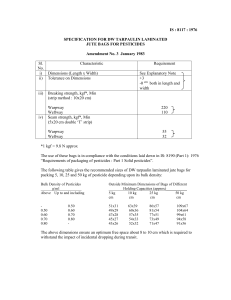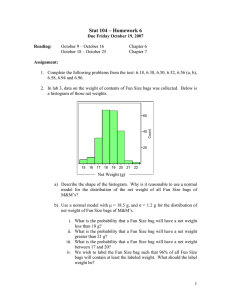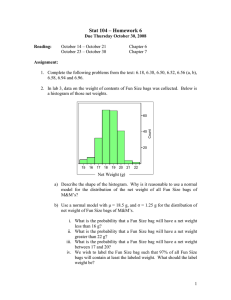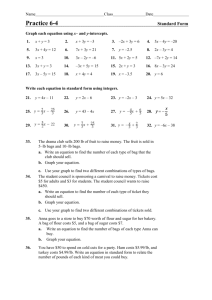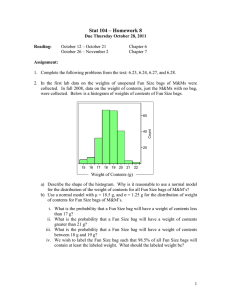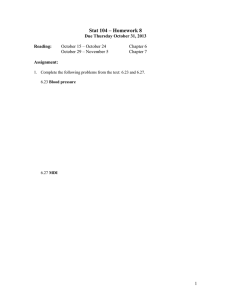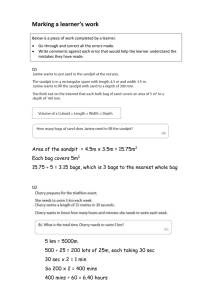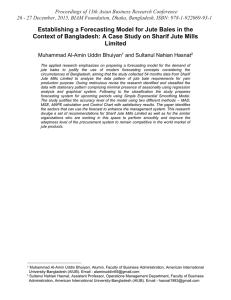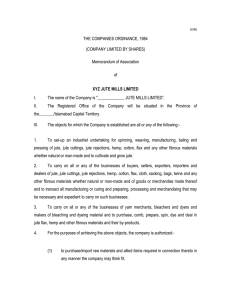South Asia Exhibition OPENING at SOUTH ASIA TEA
advertisement
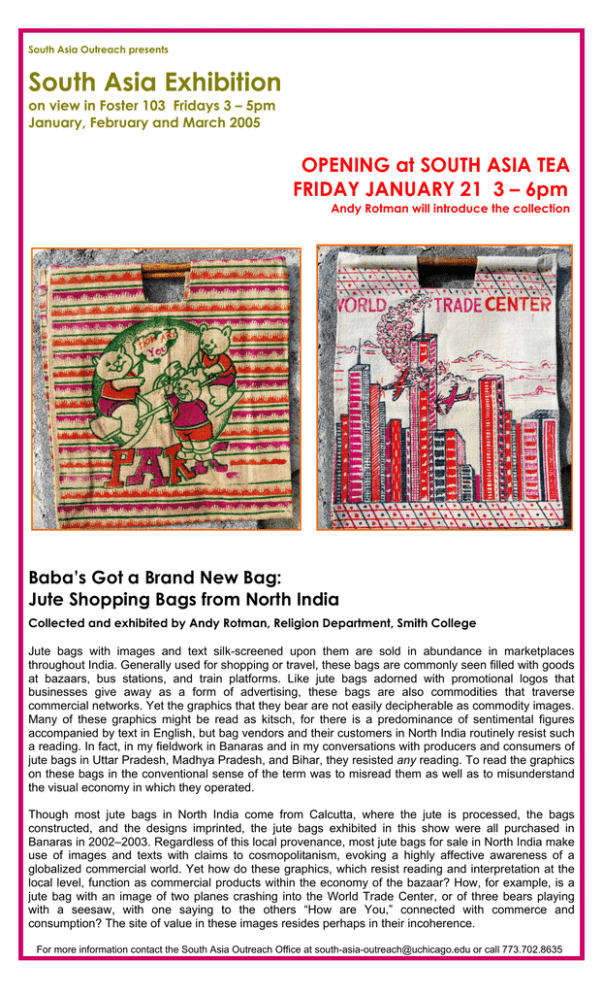
South Asia Outreach presents South Asia Exhibition on view in Foster 103 Fridays 3 – 5pm January, February and March 2005 OPENING at SOUTH ASIA TEA FRIDAY JANUARY 21 3 – 6pm Andy Rotman will introduce the collection Baba’s Got a Brand New Bag: Jute Shopping Bags from North India Collected and exhibited by Andy Rotman, Religion Department, Smith College Jute bags with images and text silk-screened upon them are sold in abundance in marketplaces throughout India. Generally used for shopping or travel, these bags are commonly seen filled with goods at bazaars, bus stations, and train platforms. Like jute bags adorned with promotional logos that businesses give away as a form of advertising, these bags are also commodities that traverse commercial networks. Yet the graphics that they bear are not easily decipherable as commodity images. Many of these graphics might be read as kitsch, for there is a predominance of sentimental figures accompanied by text in English, but bag vendors and their customers in North India routinely resist such a reading. In fact, in my fieldwork in Banaras and in my conversations with producers and consumers of jute bags in Uttar Pradesh, Madhya Pradesh, and Bihar, they resisted any reading. To read the graphics on these bags in the conventional sense of the term was to misread them as well as to misunderstand the visual economy in which they operated. Though most jute bags in North India come from Calcutta, where the jute is processed, the bags constructed, and the designs imprinted, the jute bags exhibited in this show were all purchased in Banaras in 2002–2003. Regardless of this local provenance, most jute bags for sale in North India make use of images and texts with claims to cosmopolitanism, evoking a highly affective awareness of a globalized commercial world. Yet how do these graphics, which resist reading and interpretation at the local level, function as commercial products within the economy of the bazaar? How, for example, is a jute bag with an image of two planes crashing into the World Trade Center, or of three bears playing with a seesaw, with one saying to the others “How are You,” connected with commerce and consumption? The site of value in these images resides perhaps in their incoherence. For more information contact the South Asia Outreach Office at south-asia-outreach@uchicago.edu or call 773.702.8635

